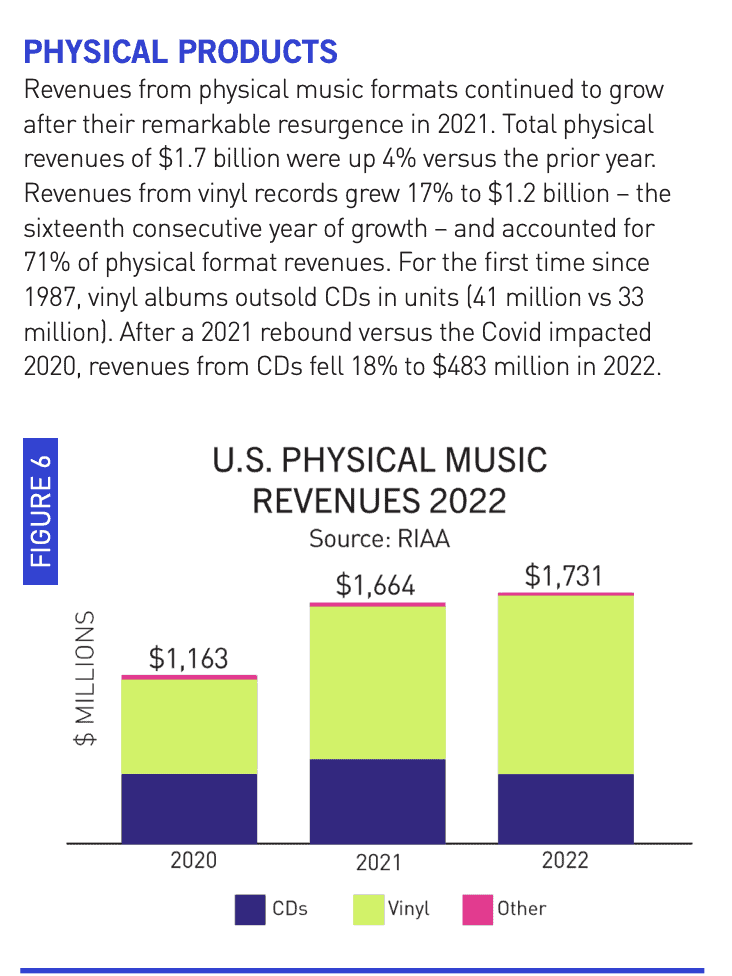Vinyl sold more units than CDs in 2022, according to a year-end report from the Recording Industry Association of America
Vinyl records (LPs) revenue share has surpassed CDs for the first time since 1987. While streaming remains the dominating revenue generator for music, Vinyl records have slowly crept up the market share. The Recording Industry Association of America (RIAA) conducted a year-end revenue statistics report in 2022 detailing the thought-provoking finding.
According to the report, vinyl records sold 41 million units compared to CDs which sold 33 million. It further states that vinyl accounted for 71% of physical format revenue which landed at $1.2 billion.

Due to this retro resurgence, album release dates for artists and labels have been contingent on vinyl inventory at pressing plants. Adele is one of many artists who had to rush the release date of her album, 30 if she wanted vinyl available on the same day the release would hit streaming services. Sony Music sources spoke with Variety in 2021 on the topic. “More than 500,000 vinyl copies of 30 have been manufactured in the months leading up to the album’s Nov. 19 release, with the company pushing catalog titles off its overseas pressing plants to ensure there won’t be any shortage of Adele LPs going into the holidays,” they shared.
The public’s appetite for vinyl records have outpaced the industry’s infrastructure capacity to supply them. Existing pressing plants are scurrying to invest in new equipment and new plants have carved out real estate to assist with the demand. In a Billboard article, editor Brittany Trang spoke with Doug Chappell, VP of Sales at Viryl Technologies. “But as new plant owners have learned by now, there are other parts of the vinyl production process that are still in short supply and are harder to replicate,” Chappell added. “Lacquer discs, for example, are currently only manufactured by one company in the entire world, and lathes — which cut the music’s initial grooves into the lacquers — are still vintage technology that are in limited supply without working reproductions on the market.”
What caused the retro resurgence?
Many factors can be attributed to the rise in the vinyl demand. For those born in the digital age, streaming may be the only medium for them to consume music hence vinyl is excitedly foreign. The auditory experience from a vinyl record comes with crackle, pops and distortion that streaming doesn’t offer. The physical presentation of a vinyl record gives the music more gravitas and meaning. Lastly since there is no shuffle option with vinyl, having to hand-pick each record means more intentionality with each selection.
While streaming takes up 84% of the music revenue share, the RIAA report shows that there are listeners who crave the tactile, analog listening experience. Now that vinyl has surpassed CDs, this can potentially change how artists plan their roll-out strategies.
